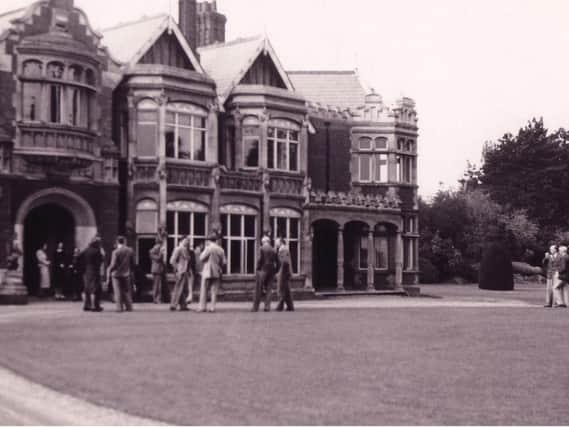Secret history of Bletchley Park's '˜Captain Ridley's Shooting Party' revealed 80 years on


Really members of the Government’s Code and Cipher School (GC&CS) and MI6, new research has reinforced that this wasn’t simply a recce, or friendly ‘rehearsal’ but the activation of one of the Government’s most-secret War Stations, at a time when conflict appeared imminent.
David Kenyon, Bletchley Park’s Research Historian said: “The arrival of the first Codebreakers to Bletchley Park has become the stuff of folklore, and the real urgency of the situation and the value of the work the Codebreakers were doing has only recently been full appreciated.”
Advertisement
Advertisement
In spring 1938, the British Government received the first reports of Adolf Hitler’s plans to invade Czechoslovakia, and the ‘shooting party’ were deployed to Bletchley Park on 18 September, as the situation deteriorated. The move to the cryptologists’ War Station had been meticulously planned, and despite a lack of storage space which caused Josh Cooper, Head of the Air Section to recall “a scene of chaos with great mounds of books and papers piled on the floor”, the Codebreakers got operations up and running so quickly that they were able to transmit their first piece of intelligence at 6pm that same day.
“The 1938 deployment enabled the Codebreakers to adapt Bletchley Park and find out what did and didn’t work on site. The fact war hadn’t been declared prevented call-ups for the ‘Profs and Dons’ earmarked for wartime service. However lessons learnt from the three-week deployment, such as shortages of staff, space and telecommunications gave the Codebreakers a huge advantage come 1939,” added Kenyon.
Bletchley Park had been bought by Admiral Hugh Sinclair, Director of GC&CS and SIS, in May 1938. It was perfectly placed next to a major railway junction, with connections to the North and the South of England, as well as the so-called ‘Varsity line’, connecting the university towns of Oxford and Cambridge, where so many of the Codebreakers’ were recruited. It was also close to a major telecommunications network enabling messages to come in and out of the Park quickly.
During the ‘shooting party’, as not everyone could be accommodated on site, several male officers and young female secretaries were booked into hotels and secretly travelled to the park daily. Officers had been booked into accommodation with no regard to rank so Naval Section clerk Joan Wingfield found herself in a smart hotel whilst her boss was fuming in a public house “where the rooms were dirty, the beds dreadful and sleeping impossible”. The mixed accommodation scandalised some locals, as the Head of the Naval Section ‘Nobby’ Clarke, aged 55 in 1938, recalled: ‘It seems to have been thought that this was a party of elderly gentlemen with their young women. A chambermaid at the hotel who was complaining of over-work, on being told times were serious and that she should not complain, said: “It’s alright for you, but some of us have to do work.” Little did she realise what these odd people were doing.’
Advertisement
Advertisement
Iain Standen, Chief Executive Officer of the Bletchley Park Trust said: “In 1938, the 150 Codebreakers hoped for peace but were preparing for war. They had no idea that by 1945 Bletchley Park would be an intelligence factory, employing a team of around 9,000 men and women producing intelligence that would make a huge contribution to the successful outcome of the War. Or that today the site would be a museum dedicated to remembering and sharing their story. We hope our visitors will enjoy tracing the footsteps of Captain Ridley and his ‘party’ on site today.”
Today visitors to the museum can visit restored huts, blocks and exhibitions, exploring the role of Bletchley Park as the home of British codebreaking and a birthplace of modern information technology.